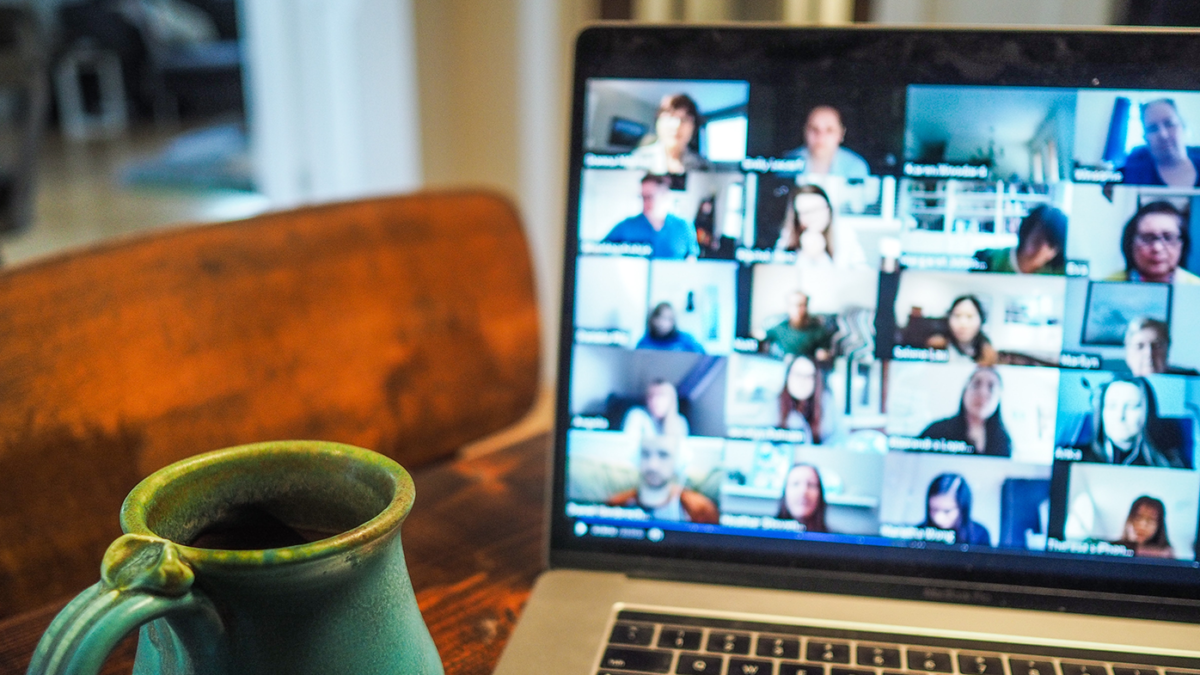I won’t start by saying 2020 was a rough year. We know that already.
We know that 2020 brought many businesses to their knees, requiring profound pivots, workforce and workplace changes, policy changes, and how it significantly altered how humans work.
As an executive coach for mid-sized to large organizations, I was in the thick of these changes every day (and still am). It wasn’t uncommon to receive texts after hours and on weekends as my clients scrambled to find their footing in a brave, new, uncertain and constantly changing world.
Based on my work with over a dozen diverse organizations over the past year, below you’ll find my predictions for what I believe The Future Of Work will look like.
#1 The Human Experience (HX) Will Replace The Employee Experience (EX)
Net-Net: Seeing employees as humans and helping them grow in all areas of their lives
Focus on: Physical, mental, emotional, spiritual, financial health
Infographic: Learning together and how it benefits our brains
It’s ok to be human at work now. We’ve seen the inside of one another’s homes, heard our colleagues’ children crying, dogs barking, and more. Thank goodness. Now we can connect to one another without the veneer of stilted professionalism.
Employee Experience (EX) was a 2-dimensional way of looking at humans. Now we care about the entire Human Experience (HX) and support our people to have more fulfilling lives, which of course helps them bring a more productive version of themselves to their work. Thanks to Gartner’s 2020 Reimagine HR Employee Survey, employers that support their peoples’ lives overall enjoy a 23% increase in the number of employees reporting better mental health, plus a 17% increase in the number of employees reporting better physical health. Additionally, employers benefit from a 21% increase in the number of high performers (compared to firms that don’t provide the same degree of support to their employees).
#2 Personal And Corporate Value Alignment Will Support More Purpose-Driven Work
Net-Net: Truly living corporate values, not just hanging them on the wall
Focus on: Being authentic, walking your walk, talking your talk
Infographic: Employee engagement has a recipe… follow it!
We all want to be part of something bigger than ourselves. We all want to know we’re making a difference. We all want to work with (note I don’t say “for”) organizations whose values align with our own. According to some 2020 Gartner research , 74% of employees expect their organization to become more actively involved in current cultural debates of the day. How did you feel about some of the more public displays of CEO support of their values, such as certain social media companies unplugging accounts of hate groups and other malevolent social forces?
The more a CEO models the organization’s values, invests in addressing challenging or even uncomfortable social issues, the more engaged their employees are. The same Gartner survey found a leap in employee engagement—from 40% to 60%— when their organization acted on today’s key social issues. Wow. If you need some help setting/refreshing your values, here’s a kit to help you.
#3 Hybrid Work Will Be The Norm—So Build A Virtual Culture
Net-Net: Release control over the work environment
Focus on: Where your people feel most productive and connected to their team/the organization overall
Infographic: You need a GAME Plan to make this work
Hybrid workforces are already becoming common, with employees working in their home, a quiet coffee shop, or the office (of some variation). What I’m curious about is the varying interest in hybrid that I’m seeing across my clients. Some employees are itching to get back to the physical office as much/as soon as possible. Others are ok coming in 1-3x per week, based on what’s needed. What do your employees want? Find out. Regardless, you’re going to need to have a GAME (Growth, Appreciation, Measurement, Engagement) plan to keep everyone “together” as a tribe. See the infographic above.
A recent Gartner survey found that 64% of managers believe that employees working in the office are higher performers than remote workers. And they said they’d be more likely to give in-office workers a higher raise than remote workers. This isn’t the experience of my clients, though, who have found that remote workers are often higher performers. Gartner’s data showed the same: for full-time workers from both 2019 (pre-pandemic) and 2020 (during the pandemic) remote workers are 5% more likely to be high performers than those who work from the office.
And be aware of gender disparity here too: many of my clients are finding that men are more interested in returning to the office versus women. If some managers believe the in-office employees are more productive, this could affect salary increases and promotions, which again could reinforce salary disparity between genders. No Bueno.
#4 Employee Monitoring Will Be Replaced By Performance Monitoring—And Trust
Net-Net: If you don’t trust them, why do you employ them?
Focus on: Monitor performance and results, not hours clocked
Infographic: Motivation can be crushed by leadership—make sure you don’t mess this up!
Did you know that as a result of the pandemic, more than 1 in 4 companies installed technology to passively track and monitor their employees? Wow. Imagine the privacy issues that come from this, as well as the trust issues. Now imagine if this happened to you—would you feel like your employer was looking over your shoulder all day? Spying on you? It’s a sticky topic, and according to Gartner research, less than 50% of employees trust their organization with their data. This is not surprising, since 44% didn’t receive any information regarding the data collected about them and how it would be used. Whoa. A little respect, please.
Expect to see a bevy of state and local regulations this year that will establish limits on what employers can track about their employees. If you choose to monitor your employees digitally, be sure to over communicate and be super transparent about the details. Regardless, you’ll get the best results (and highest morale) by simply establishing clear KPIs, success metrics, goals, OKRs, whatever you prefer to call them and monitor individual performance instead.
#5 Flexible Working Hours Will Become The Norm
Net-Net: Ensure overlap that’s essential, let go of control for the rest
Focus on: Letting people bring their best self, according to their work rhythm
Infographic: the Feedback Frame will help you give effective feedback
Are you a morning person? Or an evening person? What would it be like to work at your peak time each day? How much more productive and fulfilled could you be?
My clients are becoming increasingly flexible re: when to let their employees work. Some are requiring availability (not continuous though) between 9-5pm, meaning the employee can take gap time during this range as long as they check email at regular intervals and attend key meetings. Others are setting up split shifts (a mom for instance could work from 7-8am, then once the kids are set, from 10am-2pm, and again a check in on email/etc from 7-8pm). Get creative with exploring what your people need and what serves the business. This will require us to become better at giving feedback, and often doing it digitally. See the infographic above.
Gartner’s 2020 Reimagine HR Employee Survey revealed that organizations offering employees flexibility over when, where and how much they work saw 55% of their work force as high performers. Yet at organization with a standard 40 hour work week, only 36% of employees were considered high performers. Again, it’s time to measure on results, as I mention in #4 above, versus time clocked.
#6 Freelance, Temporary Help Will Be Welcomed To Optimize Resource Allocation
Net-Net: Stay lean and get extra help as needed
Focus on: You’ll need better communication and more Standard Operating Procedures to ensure quality and consistency with temp help
Infographic: Be sure to include your temp help in your tribe
We all need more diverse capabilities and skills from our teams than ever before. And Gartner’s analysis shows that organizations are now listing about 33% more skills on job ads in 2020 than they did in 2017. Why? Because the world is moving faster, technology is moving faster, we have more diversity in the work we do, so we all have to level up to meet ever-changing needs.
Many of my clients are looking to temp help, using UpWork, Fiverr and other sites to get the specific (often narrow) help them need at the moment. We’ll need great communication to make this work, to help onboard everyone faster and ensure consistent quality work.
#7 Neurodiversity And Mental Health Support Will Be Destigmatized.
Net-Net: We all have our struggles, so let’s support instead of judge
Key Focus: Create a Neurodiversity [link to neurodiversity blog] policy (if you don’t have one yet) and internal support groups
Infographic: Stress, change, isolation are devastating to us all… learn what these do the brain so you can side step this risk
I was very happy to learn that even before the pandemic, Gartner research showed that 45% of well-being budget increases were being allocated to mental and emotional well-being programs. And now in the midst of the pandemic (and let’s be realistic—for the ongoing future) we’ve seen mental and emotional well-being brought to the forefront for all organizations.
Per Gartner, by late March 2020, 68% of organizations had introduced at least one new wellness benefit to help their employees navigate the pandemic. And in 2021, we’ll see organizations join my clients in widely offering “mental health days”, support groups, compassion around ADHD, OCD, Bipolar, GAD employees. Just like some of us have a bad back and can’t sit long in a given position, these mental and emotional challenges will be viewed the same way—with acceptance and non-judgment.
We’ve still got a way to go to whatever the new normal is going to be. With the above tools you’ll be better positioned to capitalize on it, and with a happier, healthier, more productive workforce.







